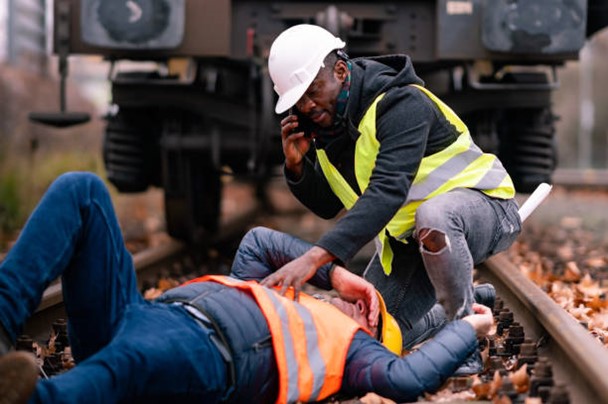
Working on the railroad remains one of the most dangerous jobs in America. Between moving equipment, heavy machinery, and exposure to hazardous materials, the risk of injury is substantial. When accidents occur, the consequences can be devastating—physically, emotionally, and financially.
Fortunately, railroad workers have unique legal protections that differ from traditional workers’ compensation laws. If you’ve been injured on the job, it’s critical to understand your rights under the Federal Employers Liability Act (FELA) and how you can pursue the compensation you deserve.
What Is FELA?
The Federal Employers Liability Act (FELA) was enacted in 1908 to protect and compensate railroad workers injured on the job due to employer negligence. Unlike regular workers’ comp claims, FELA requires the injured worker to prove that the railroad company was at least partially at fault.
This allows for potentially greater financial recovery, including:
- Medical bills (past and future)
- Lost income and diminished earning capacity
- Pain and suffering
- Emotional distress
- Loss of enjoyment of life
Common Causes of Railroad Worker Injuries
Railroad companies are responsible for providing a reasonably safe workplace. When they fail to do so, serious injuries or fatalities can occur. Some common examples of negligence include:
- Inadequate training or supervision
- Unsafe tools or equipment
- Poorly maintained tracks or facilities
- Exposure to harmful chemicals
- Fatigue from excessive hours
These hazards often lead to back injuries, amputations, traumatic brain injuries, and in some tragic cases, death.
Proving Negligence in a FELA Claim
To succeed in a FELA case, injured workers must show that the railroad company—or a co-worker—acted negligently and that this negligence played a role in the accident. Unlike workers’ comp, fault must be established, but even partial fault can lead to compensation.
That’s why having an experienced attorney is essential. At Buckeye Law Group, we conduct thorough investigations, work with industry experts, and fight tirelessly to protect injured railroad workers and their families.
If you’re a railroad employee injured on the job, don’t wait—reach out to Buckeye Accident Attorneys today to discuss your legal options and take the first step toward recovery.
Injured as a Passenger on a Motorcycle—What Are Your Rights?
Passengers Have Strong Legal Protections Under Ohio Law Many people believe motorcycle passengers have limited legal options after a crash—but that’s completely false. In Ohio, injured motorcycle passengers almost always
Understanding Liability in Multi-Vehicle Motorcycle Wrecks
Why Multi-Vehicle Motorcycle Crashes Are So Complex When a motorcycle is involved in a crash with multiple vehicles, determining who is responsible becomes significantly more complicated. Unlike two-car collisions—where fault
Legal Recourse for Injuries Caused by Prescription Errors
When Medication Mistakes Start Outside the Hospital Prescription errors don’t just happen in hospitals. They can occur in doctors’ offices, pharmacies, clinics, long-term care facilities, or anywhere medications are ordered
How Dosage Errors and Allergic Reactions Happen in Hospitals
When Medication Mistakes Put Patients in Danger Hospitals are supposed to be safe, controlled environments where medications are administered accurately and monitored closely. But even in well-staffed medical facilities, medication
Lab Mistakes That Lead to Delayed or Wrongful Treatment
When Faulty Testing Puts Your Health at Risk Lab tests are meant to provide clarity, but when errors occur, they can send doctors and patients down the wrong path. A
Can You Sue for a Misdiagnosis Caused by Lab Negligence?
When Lab Errors Lead to Life-Changing Consequences Laboratories play a crucial role in modern healthcare. Doctors rely on lab results to diagnose illnesses, determine treatment plans, and make fast decisions
When Hospitals Harm Instead of Heal: Understanding Your Rights
Hospitals Owe Patients a Duty of Safety and Competent Care People turn to hospitals for healing, not harm. Yet thousands of patients every year are injured due to preventable medical
Nursing Mistakes, Staffing Shortages, and Poor Protocols
When Hospital Errors Lead to Preventable Harm Nurses are the backbone of patient care, but when they are overworked, understaffed, or unsupported by proper hospital protocols, mistakes become more likely
Can You File a Claim If You Were a Passenger in a Crash?
Passengers Have Strong Legal Rights After a Car Accident Many people assume that passengers have fewer rights in an accident — but legally, it’s often the opposite. Passengers are almost
Hit by a Distracted Driver? Here’s What You Need to Know
Understanding How Distracted Driving Causes Serious Crashes Distracted driving has become one of the leading causes of preventable car crashes in the U.S., and Ohio is no exception. Whether the
